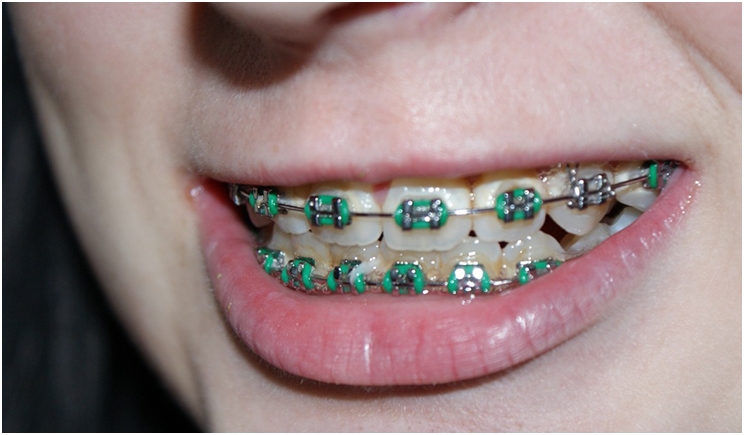
With the increasing demand for aesthetic appeal and appearance, adult treatment has been the fastest growing area in the field of orthodontics.
Increased awareness of malocclusion, advances in materials and biomechanically sound appliances, and interdisciplinary treatment all have played an important role in making orthodontic treatment popular among adults.
This has led to an increased focus on simplified and rapid intervention, which in turn has led to compromises in the outcomes of the treatment. Technology and reliance on laboratory assistance have circumvented fundamental diagnoses and systematically planned treatment sessions.
To ensure the quality of your care, here are seven keys you can use to optimize your treatment strategy.
Create an Organized Approach for Your Orthodontic Treatment Process
Clearly define the final treatment to avoid any confusion and complications. Establishing an accurate diagnosis is the most important step. The goal of the diagnostic process in an interdisciplinary treatment is to produce a comprehensive but concise list of your patient’s problems and to incorporate various treatment options into the treatment plan that provide maximum benefits. You should:
- Identify the different characteristics of malocclusion that contribute to the development of the problem. Assemble a comprehensive but concise database of useful information derived from the patient’s history, clinical examination, and analysis of diagnostic records.
- Have a thorough knowledge of the different disciplines of dentistry to generate the relevant data needed.
- Define the nature of the problem to design a treatment strategy based on the specific needs and desires of your patient. Discuss orthodontic treatment options with your patient and come up with the proper plan.
Set Clear Treatment Goals
Managing your patient’s dental problems requires you to clarify your goals right from the beginning of treatment and continue focusing on them until the end of treatment. Your treatment goals should be centered on good oral health, good stomatognathic function, and long-term stability.
The interdisciplinary treatment plan should tackle the most high-priority problems, which must include the main complaint while decreasing any risk to your patients. Most if not all dentofacial abnormalities usually have a lot of complex problems that encompass the different disciplines of dentistry, so make sure the treatment your patient is receiving will lead to functional and aesthetic improvement.
Recognize Orthodontics to Be More Than an Aesthetic Solution
Modern orthodontics is focused mostly on treating malocclusions, which results in the enhancement of the entire dento-gingival apparatus, including a prime emphasis on the aesthetic outcome.
Use Orthodontic Treatment to Correct Biologic Width Violations
Use orthodontic treatment to reduce biological width violations, which occur due to a loss of periodontal support. You can do this by orthodontically extruding the tooth and moving the margin away from the bone.
If the biological width violation occurs across the facial surface and if the gingival tissue level is accurate, then it is an indication of orthodontic extrusion. The extrusion can be implemented in two ways.
First, the tooth can be erupted slowly by applying a low orthodontic extrusion force, carrying the gingival tissue and alveolar bone with it. After that, the tooth is stabilized in this new position and treated with surgery to correct the gingival tissue and bone levels.
Second, you can conduct rapid orthodontic extrusion whereby the tooth is erupted to the desired amount over the span of several weeks.
Improve Implant Sites with Orthodontics
You can improve dental implant sites by implementing the orthodontic extrusion of the hopeless teeth in a non-invasive and non-surgical technique through which the volume of the residual bone at the implant sites can be strengthened. This can be done by applying a tensile force to the periodontal ligament by which the fibers are stretched and the osteoblasts produce new bone.
Forced eruption of the teeth enlarges the size of the alveolar bone and moves the interdental papillae and free gingiva coronally.
Optimize Pre-Restorative Orthodontics
This type of treatment is largely defined by the type of restoration that you have planned. One main objective of repositioning the teeth is to assist in accomplishing predictable restorations. Consequently, in the absence of timely dental intervention, the dentition deterioriates significantly.
The treatment should be planned with the strategic sequencing of procedures adhering to the holistic final objectives, ensuring predictability at every stage. This creates a reliable foundation for predictable distribution of occlusal forces. Proficient synchronization between orthodontic and restorative strategies is fundamental to interdisciplinary treatment success.
Use Customized Orthodontic Tooth Movements to Maximize Aesthetic Appeal
In a cosmetically concerned society, aesthetics is an important part of your patient’s expectations. This naturally prompts all orthodontists to explore the various factors that promote optimal aesthetics.
Adhering to the principles of structural balance and functional efficiency, your treatment planning should always incorporate distinct and customized aesthetic objectives. Various procedures from other dental disciplines can be combined with orthodontic treatment to refine aesthetic potential.
This approach’s goal is to simplify and idealize the treatment plan by providing solutions to a variety of clinical situations as they arise and enhancing the treatment results. This unique approach will help you advance your orthodontic practice for the benefit of your patients and community.
Ms. Taylor found the perfect fit for herself as the online marketing manager at Thurman Orthodontics in Fresno, Calif. She believes that a great smile does more than just make your patients look great. It makes them feel great as well. The power of a smile has always been a mystery to her, and she loves researching and writing about it. What brings a big smile to her face is her family and surfing. She also likes to bake, and her children and coworkers call her the cookie fairy. She can be reached at emily@thurmanortho.com.
Related Articles
How Clear Aligners Can Bring in More Revenue for Your Practice
Today’s Kids Look Forward to Getting Braces
Smart Braces Use Flexible Batteries for Better Treatment











